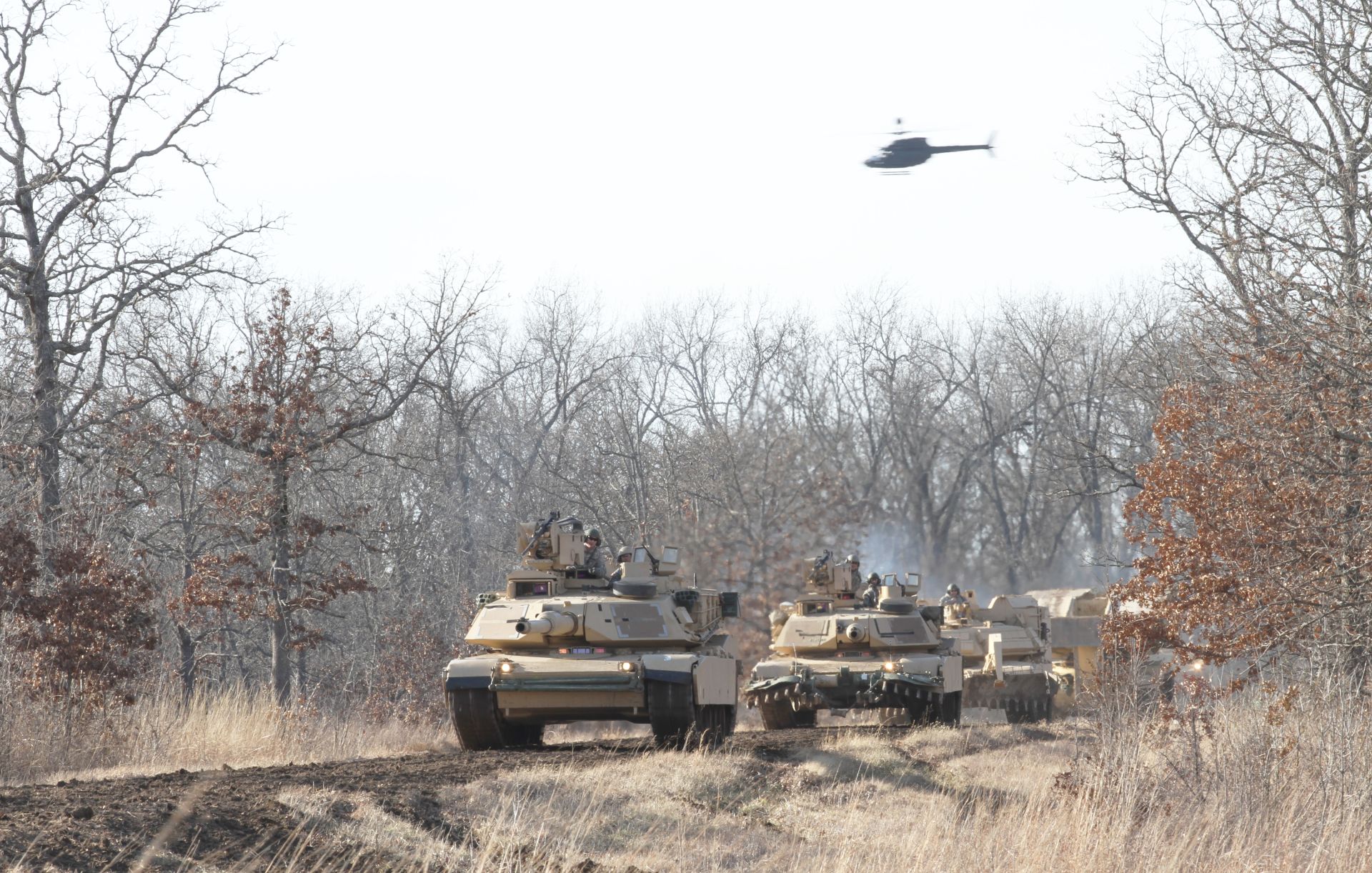A lack of training time can be the biggest challenge faced by Army units shaking off the rust and returning to combined-arms operations, according to the chief of U.S. Army Forces Command.
Soldiers now have less time in between deployments, which limits their training opportunities. While the goal is to give Soldiers twice as much dwell time so they can hone and develop new skills, the Army is seeing a ratio of around 1-to-1.3 in terms of Soldiers’ deployed time compared to their dwell time, Gen. Robert Abrams said.
“Our No. 1 constraint for training is time available,” Abrams said during a recent Association of the U.S. Army discussion on readiness. “Our commitments worldwide across the globe in support of our combatant commanders remain at a very high level, while we continue to simultaneously downsize the total force.”
Last year, Army officials announced the regular Army would be cut by 40,000 Soldiers to 450,000 by the end of fiscal year 2018. Tasked by Congress to look into the structure of the Army, the National Commission on the Future of the Army cautioned earlier this year that the total Army should not dip below 980,000 Soldiers, with an active-duty force of 450,000 at the bare minimum, in order to remain effective.
The manning cuts, along with non-deployable Soldiers and a decrease in training time, could hinder Army efforts to boost its combined-arms capabilities, which senior leaders believe will play a key role in a future multi-domain battlefield.
“We had an incredible amount of time in war experience in counterterrorism and counterinsurgency, but we were very rusty in our combined-arms maneuver proficiency across the board,” Abrams said, describing his experience taking command of FORSCOM in 2015.
The U.S. military from the late 1990s through 2003, he noted, was a master in combined arms through a steady flow of exercises. Today’s Army is still years behind.
“We’re at least four years from mastery level proficiency,” he said. “If we’re going to achieve mastery level in the fundamentals of our combined-arms maneuver proficiency, we’re actually going to have to do this in a live environment to give us enough repetitions.”
The Army has developed complex missions under the Decisive Action Training Environment, which involves a hybrid threat and simulates the intricacies the Army could face in a conflict with a near-peer adversary.
“This is the environment we expect to operate in, and that’s the environment we’ve got to get our leaders and units ready to operate in,” Abrams said.
The general said the Army has increased live fires as it makes progress, but other missions around the world have affected its ability to maintain the readiness of its forces.
“The impact of nonstandard missions continues to have a degrading effect across our force in being able to sustain proficiency in combined-arms maneuver,” he said.
In five to 10 years, he said, Soldiers will encounter a battlefield with combinations of conventional and unconventional forces. In many parts of the world, they will face the risk of insurgencies, displaced persons and unstable host-nation governments. Cyber warfare will also emerge as a formidable weapon.
“There is a real cyber threat in the world today that affects not only national infrastructure but has tactical applications,” he said.
The Army, though, is leading the way in that arena. “We’re the only service that’s created its own Cyber Branch and its own cyber military occupational specialty for enlisted, and we are targeting our recruitment efforts in that manner,” Abrams said.
As for tactical applications, Abrams hinted that cyber actors could have the ability to send text messages to every cell phone in a certain geographical area, so Soldiers could send alerts to a certain populace or influence them as part of psychological operations.
“That’s actually possible in today’s world,” he said.
Learning these new technologies is another reason Soldiers, including those in the National Guard and Reserve, need more time to train.
While funding for that training is important, the funding will matter little if there is no time to conduct the training, said Brig. Gen. Blake Ortner, commander of the 29th Infantry Division, a National Guard unit serving Maryland, North Carolina and Virginia.
“If you add more money, it doesn’t necessarily help if you don’t have the personnel to train,” Ortner said at the discussion.
Soldiers leaving active duty could provide one potential solution to the Army’s lack of skilled personnel to fill certain career fields, he said.
“That means they’re already trained. We don’t need to spend the time or money to train them,” Ortner said. “I encourage any leaders out there; if you’ve got Soldiers that have decided to leave active duty, please encourage them to go to the Guard.”










